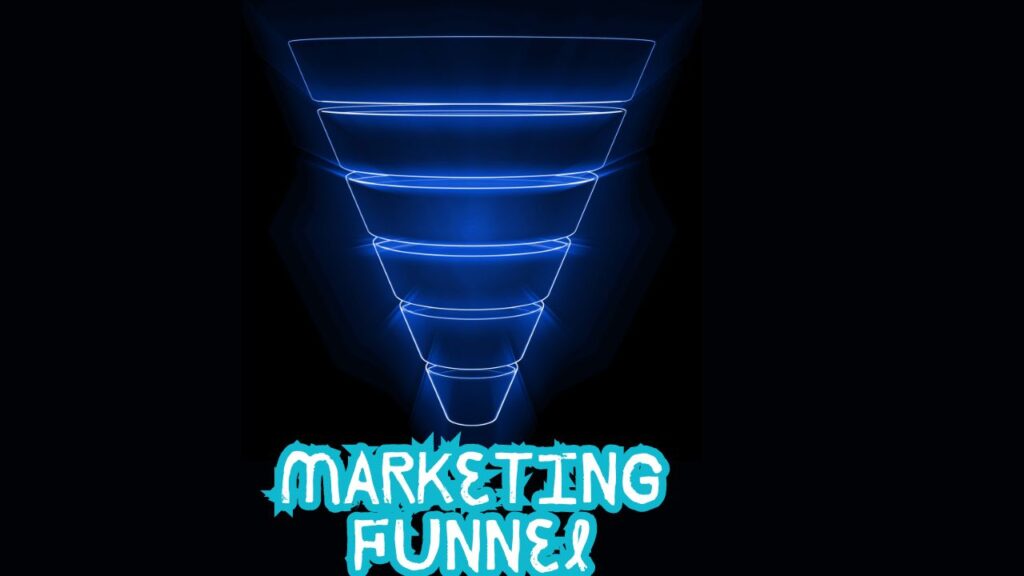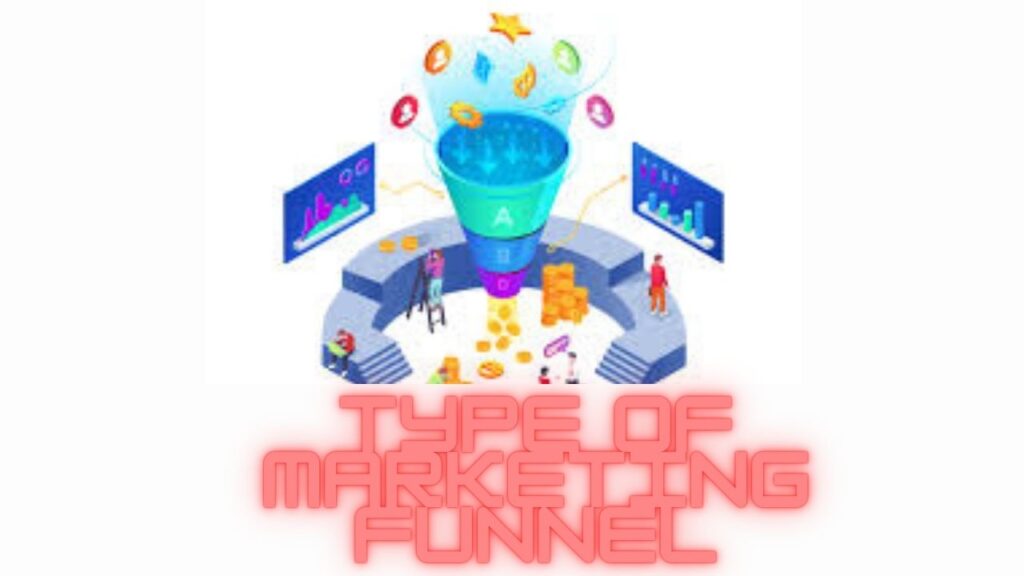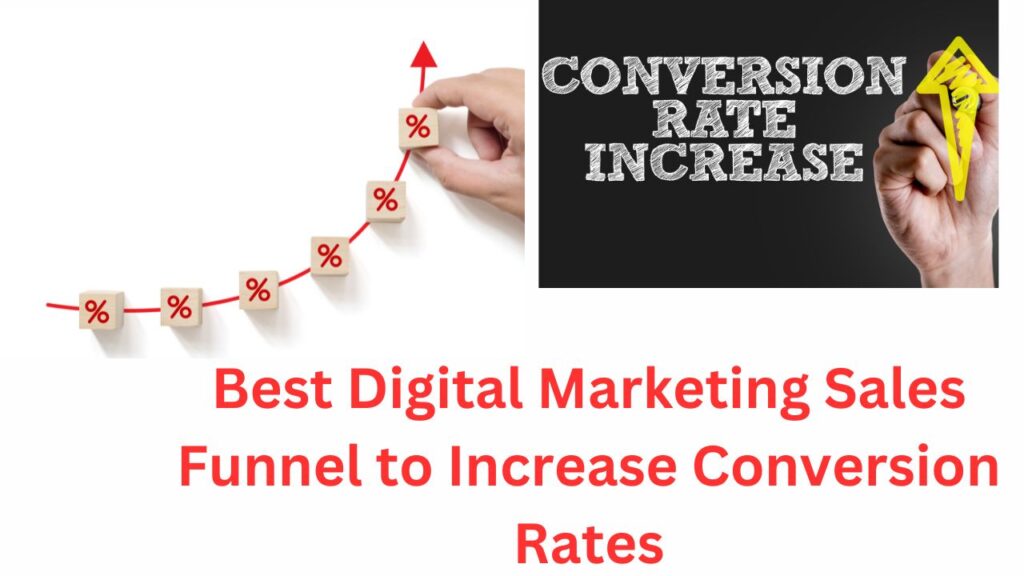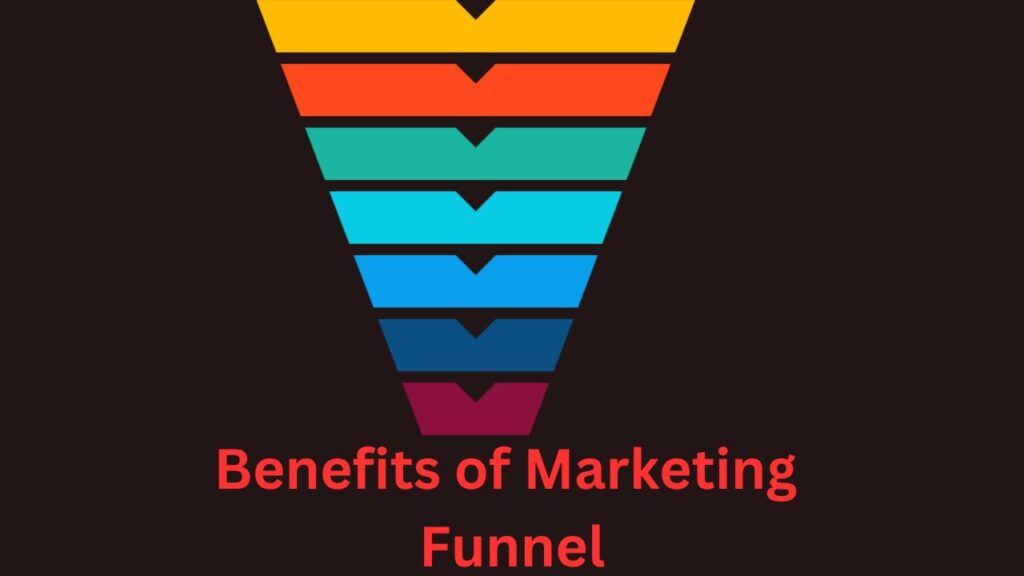Table of Contents
ToggleWhat is a Best Marketing Funnel
What is a best marketing funnel. Nowadays everything is going online, after covid, people started their business online because online sales can be increased better than offline. Every businessman creates this funnel for his business, now the question arises what is this marketing or sales funnel?
Sales Funnel, also known as Marketing Funnel, is a Powerful Marketing Tactic under which the journey of a customer is shown from Awareness Stage to Final Conversion Stage. Under this, a visitor is converted into a customer by passing through various steps.
For example, today we all do online shopping from sites like Amazon, Flipkart, so sometimes we also buy those items from these sites which we actually did not need.
But here Amazon started showing other products apart from the product you need through its Funnel Strategy, showed their comparison, showed ratings & reviews, showed discounts offered and in this way you also became ready to buy these additional items.
This Marketing Funnel Concept applies to all types of Product & Service Based Businesses. Today in this blog we will know what is a sales funnel, we will know about the Best Digital Marketing Sales Funnel and its benefits and much more, stay with us till the end
What is a Marketing Funnel?

A marketing funnel is a strategic framework that visualizes the journey a potential customer takes from initial awareness of a product or service to making a purchase decision.
It represents the stages a consumer moves through, beginning with awareness and progressing through interest, consideration, and intent, before finally converting into a customer.
Each stage of the funnel requires targeted marketing efforts and nurturing strategies aimed at guiding prospects closer to making a purchase.
By understanding and optimizing the marketing funnel, businesses can effectively attract, engage, and convert leads, ultimately driving growth and increasing sales.
To understand this, let’s understand the funnel of online shopping, what is it and how does it work. Let’s take the funnel of Flipkart.
First of all, you went to the Flipkart website.
You searched for your product there.
A list of your favorite products appeared in front of you.
You finalized the product as per your requirement.
Now Flipkart started recommending you other products related to your product.
On these products, Flipkart also offered you some additional discount and created fear of missing out in you by telling you that it is a limited period deal.
Now your interest has increased in these other products along with your actual product.
Finally, you also bought Flipkart Recommended Products along with your original product.
This way Flipkart converted you from a casual visitor to its customer.
Types of Marketing Funnel

1. Lead Generation Funnel
A lead generation funnel is a strategic approach to attract, engage, and capture potential customers’ contact information, guiding them towards becoming qualified leads.
The process begins at the top of the funnel (TOFU) by using tactics such as blog posts, social media content, and paid ads to draw in a broad audience. Moving into the middle of the funnel (MOFU), the focus shifts to nurturing these visitors by offering valuable resources like ebooks, webinars, and free guides in exchange for their contact details.
Finally, at the bottom of the funnel (BOFU), follow-up emails and personalized outreach are employed to convert these leads into paying customers. By effectively managing each stage, businesses can build a robust pipeline of prospects and enhance their chances of driving sales growth.
2. Sales Funnel
A sales funnel is a structured model that outlines the journey potential customers take from initial awareness to final purchase. At the top of the funnel (TOFU), businesses attract potential customers through advertisements, SEO, and content marketing.
As prospects move to the middle of the funnel (MOFU), they are engaged with product demos, case studies, and personalized emails to nurture their interest and help them evaluate the offering.
At the bottom of the funnel (BOFU), the focus is on converting these engaged prospects into customers through special offers, discounts, and direct sales outreach. By guiding prospects through each stage of the sales funnel, businesses can systematically nurture leads and increase their conversion rates, ultimately driving revenue growth.
3. Webinar Funnel
A webinar funnel is a powerful strategy designed to attract, engage, and convert potential customers through online seminars. At the top of the funnel (TOFU), businesses promote the webinar using advertisements, email campaigns, and social media to draw in a broad audience.
During the middle of the funnel (MOFU), the live webinar serves as an opportunity to provide valuable content, address pain points, and showcase solutions, engaging attendees and nurturing their interest.
After the webinar, at the bottom of the funnel (BOFU), follow-up emails with personalized offers and calls-to-action are sent to attendees, encouraging them to take the next step, such as making a purchase or booking a consultation. By leveraging the webinar funnel, businesses can effectively educate their audience, build trust, and drive conversions.
4. Ecommerce Funnel
An ecommerce funnel is a strategic model designed to guide potential customers through the online shopping process, from initial interest to final purchase.
At the top of the funnel (TOFU), businesses use SEO, pay-per-click (PPC) ads, and social media marketing to attract visitors to their website. In the middle of the funnel (MOFU), the focus shifts to engaging these visitors with detailed product pages, customer reviews, and comparison guides to inform their buying decisions.
At the bottom of the funnel (BOFU), tactics such as cart abandonment emails, retargeting ads, and special discounts are employed to encourage visitors to complete their purchases. By optimizing each stage of the ecommerce funnel, businesses can effectively convert website traffic into paying customers and increase their overall sales.
5. Email Marketing Funnel
An email marketing funnel is a targeted strategy designed to nurture leads and convert them into customers through a series of planned email communications.
At the top of the funnel (TOFU), businesses attract potential leads by offering lead magnets like free downloads, guides, or exclusive content in exchange for email sign-ups. In the middle of the funnel (MOFU), these leads are nurtured with segmented email sequences that provide valuable information, address pain points, and build a relationship with the audience.
At the bottom of the funnel (BOFU), personalized offers, product recommendations, and compelling calls-to-action are sent to encourage recipients to make a purchase. By effectively managing the email marketing funnel, businesses can build strong relationships with their audience, keep them engaged, and drive higher conversion rates.
6. Consultation Funnel
A consultation funnel is a structured approach businesses use to convert prospects into clients through personalized consultations or trials. At the top of the funnel (TOFU), businesses attract potential clients through targeted ads, content marketing, and referrals that highlight their expertise and offerings.
Moving to the middle of the funnel (MOFU), prospects are encouraged to sign up for consultations or trials through compelling landing pages, signup forms, and persuasive messaging that emphasizes the value of the service.
At the bottom of the funnel (BOFU), businesses follow up with personalized emails, phone calls, or direct meetings to address specific client needs, demonstrate capabilities, and ultimately convert consultations into long-term clients.
By effectively guiding prospects through each stage of the consultation funnel, businesses can showcase their value proposition, build trust, and secure valuable client relationships.
7. Free Trial Funnel
A free trial funnel is a strategic approach that businesses use to attract potential customers by offering them a limited-time trial of their product or service.
At the top of the funnel (TOFU), businesses promote the free trial through various channels such as ads, social media, and email campaigns to reach a wide audience. In the middle of the funnel (MOFU), interested prospects sign up for the trial, often providing their contact information.
During this stage, businesses provide onboarding emails, tutorials, and resources to help trial users understand the value and benefits of their offering.
At the bottom of the funnel (BOFU), businesses aim to convert trial users into paying customers by sending conversion-focused emails, offering special discounts or incentives, and providing excellent customer support.
Best Digital Marketing Sales Funnel to Increase Conversion Rates

1. Content Marketing Funnel
A content marketing funnel is a strategic framework designed to attract, engage, and convert potential customers through valuable and relevant content. At the top of the funnel (TOFU), businesses create and distribute blog posts, videos, infographics, and social media content to capture a broad audience’s attention.
In the middle of the funnel (MOFU), the focus shifts to nurturing these prospects by offering in-depth resources like ebooks, whitepapers, webinars, and case studies that address their pain points and build trust.
At the bottom of the funnel (BOFU), businesses aim to convert these engaged leads into customers by providing product demos, free trials, and compelling case studies, alongside personalized follow-up emails and offers.
By effectively guiding prospects through each stage of the content marketing funnel, businesses can build strong relationships, establish authority, and drive higher conversion rates.
2. Email Marketing Funnel
An email marketing funnel is a strategic approach to nurturing leads and converting them into customers through targeted email campaigns. At the top of the funnel (TOFU), businesses attract potential leads by offering valuable lead magnets such as free downloads, guides, or exclusive content in exchange for email sign-ups.
In the middle of the funnel (MOFU), these leads are nurtured with segmented email sequences that provide valuable information, address their pain points, and build a relationship with them.
At the bottom of the funnel (BOFU), personalized offers, product recommendations, and compelling calls-to-action are sent to encourage recipients to make a purchase. By effectively managing the email marketing funnel, businesses can build strong relationships with their audience, keep them engaged, and drive higher conversion rates.
3. Social Media Marketing Funnel
A social media marketing funnel is a strategic process that guides potential customers from initial awareness to final conversion using social media platforms. At the top of the funnel (TOFU), businesses create engaging content, such as posts, videos, and ads, to attract a broad audience and build brand awareness.
In the middle of the funnel (MOFU), the focus shifts to nurturing these prospects by sharing valuable and informative content, hosting live Q&A sessions, running contests, and engaging directly with followers to build trust and deepen relationships.
At the bottom of the funnel (BOFU), businesses aim to convert these engaged prospects into customers through targeted ads, special promotions, retargeting campaigns, and compelling calls-to-action.
By effectively utilizing each stage of the social media marketing funnel, businesses can increase their brand visibility, foster engagement, and drive conversions.
4. SEO and PPC Funnel
An SEO and PPC funnel is a dual-strategy approach businesses use to attract and convert potential customers through search engine optimization (SEO) and pay-per-click (PPC) advertising.
At the top of the funnel (TOFU), businesses focus on SEO to increase organic visibility in search engine results, targeting relevant keywords and optimizing their website for better rankings.
This attracts a wide audience actively searching for related products or services. In parallel, PPC campaigns are used to drive immediate traffic and visibility through paid ads displayed on search engines and other platforms.
In the middle of the funnel (MOFU), efforts are directed towards engaging and nurturing these visitors. This includes creating compelling landing pages that match search intent, providing informative content, and using retargeting ads to keep prospects engaged.
Finally, at the bottom of the funnel (BOFU), conversion optimization techniques such as A/B testing, personalized offers, and clear calls-to-action are employed to turn engaged visitors into paying customers.
By effectively managing both SEO and PPC strategies throughout the funnel, businesses can optimize their online presence, attract qualified leads, and maximize their conversion rates.
5. Webinar Funnel
A webinar funnel is a strategic approach businesses use to engage and convert prospects through online seminars or webinars.
At the top of the funnel (TOFU), businesses promote the webinar through various channels such as email marketing, social media, and advertisements to attract a broad audience. These promotional efforts aim to generate interest and encourage registrations for the webinar.
In the middle of the funnel (MOFU), the webinar itself serves as a platform to provide valuable content, address audience pain points, and showcase expertise. This stage focuses on engaging attendees, building credibility, and nurturing relationships with potential customers.
At the bottom of the funnel (BOFU), businesses capitalize on the engagement and interest generated during the webinar to convert attendees into customers.
This is achieved through follow-up emails that reinforce key points, provide additional resources, and present relevant offers or calls-to-action to encourage further interaction or purchase.
By strategically planning and executing each stage of the webinar funnel, businesses can effectively educate their audience, build trust, and ultimately drive conversions and sales.
Benefits Of Marketing Funnel

If you want to grow your business then your marketing funnel should be strong. Well, the goal of every business owner is to make more and more customers, for which he uses various marketing tactics.
But due to lack of understanding of marketing funnel, many times despite investing money, businesses are not able to attract customers or they end up buying products of some other company.
Therefore, it is very important to understand the benefits of marketing funnel. Next we will know about the benefits of marketing funnel stay with us till the end.
1. Clear Customer Journey
A clear customer journey is essential for guiding potential customers through the various stages of their decision-making process, from initial awareness to final purchase and beyond.
By mapping out this journey, businesses can understand and anticipate the needs, preferences, and behaviors of their prospects at each stage. This clarity allows for the creation of targeted marketing efforts and personalized content that resonate with customers, ensuring a seamless and engaging experience.
2. Optimized Resource Allocation
Optimized resource allocation through the marketing funnel involves strategically directing marketing efforts and budget to the most impactful stages of the customer journey.
By analyzing funnel performance, businesses can identify which stages require more support, such as increasing awareness or improving lead conversion. This targeted approach ensures that resources—whether financial, human, or technological—are invested where they can yield the greatest return.
For example, if data shows that a significant number of leads drop off during the consideration phase, a company might allocate more resources to enhancing content or improving engagement strategies at that stage.
This strategic alignment of resources not only enhances efficiency but also maximizes the overall effectiveness of marketing campaigns, driving better outcomes and improving the return on investment.
3. Improved Lead Nurturing
Improved lead nurturing involves systematically guiding potential customers through the stages of the marketing funnel with personalized and relevant interactions.
By understanding where leads are in their journey—whether they are just becoming aware of your brand, evaluating options, or nearing a decision—you can tailor your communication and offers to match their needs and interests.
This targeted approach helps build stronger relationships and keeps leads engaged, increasing the likelihood of conversion. Implementing strategies such as personalized email campaigns, targeted content, and automated follow-ups ensures that each lead receives the right message at the right time.
Effective lead nurturing not only shortens the sales cycle but also enhances the overall customer experience, leading to higher conversion rates and greater customer satisfaction.
4. Increased Conversion Rates
Increased conversion rates are achieved by refining and optimizing each stage of the marketing funnel to address potential barriers and enhance the customer journey.
By analyzing data and identifying points where leads may drop off or lose interest, businesses can implement targeted strategies to smooth out friction and encourage progression toward a purchase.
For instance, optimizing landing pages, personalizing follow-up communications, and offering timely incentives can significantly impact a lead’s decision-making process.
5. Effective Performance Measurement
Effective performance measurement involves systematically tracking and analyzing key metrics to assess the success of marketing strategies and initiatives.
By establishing clear goals and KPIs, businesses can monitor how well their marketing efforts align with desired outcomes, such as lead generation, conversion rates, and customer acquisition costs.
Utilizing tools like analytics platforms and dashboards enables real-time tracking and reporting, providing insights into campaign effectiveness and areas needing adjustment.
This data-driven approach allows for informed decision-making, helping marketers identify successful tactics and areas for improvement.
Regular performance reviews and adjustments based on these insights ensure that marketing strategies remain agile and responsive to changing market conditions, ultimately enhancing overall effectiveness and driving better results.
Conclusion
Marketing funnel model provides significant advantages in optimizing marketing efforts, improving lead nurturing, and increasing conversion rates.
By focusing on the stages of the customer journey, businesses can tailor their strategies to address specific needs and behaviors, allocate resources more effectively, and enhance overall campaign performance.
Effective performance measurement further ensures that marketing strategies are continuously refined based on data-driven insights, leading to more strategic decision-making and better results.
Ultimately, a well-executed marketing funnel helps create a more efficient, personalized, and impactful approach, driving greater success and achieving a higher return on investment.
I hope you have understood after reading this guide of Marketing Funnel in Digital Marketing that what is sale funnel and how it works.
Well, now if you have understood the Marketing Funnel meaning but want to learn it more closely, practically and step by step, then join us in Rozy Digital Community.
If you are interested in joining us, then register now for this Value Packed Digital Marketing Webinar, where I, ( Rozy) will tell you how to create multiple sources of income and grow your business multiple times by learning digital marketing. Click on the button below and register for my webinar.
Register quickly and meet me live.
